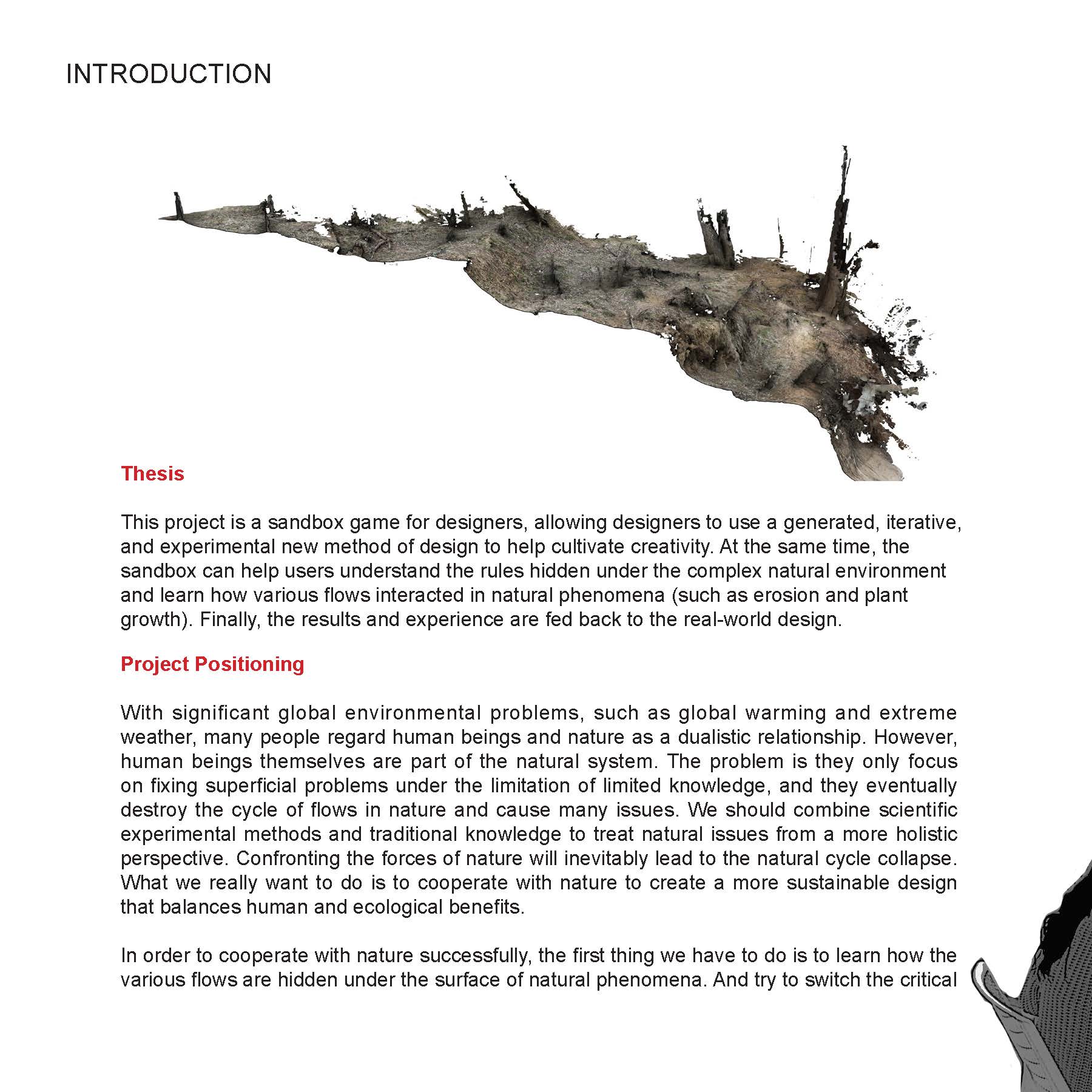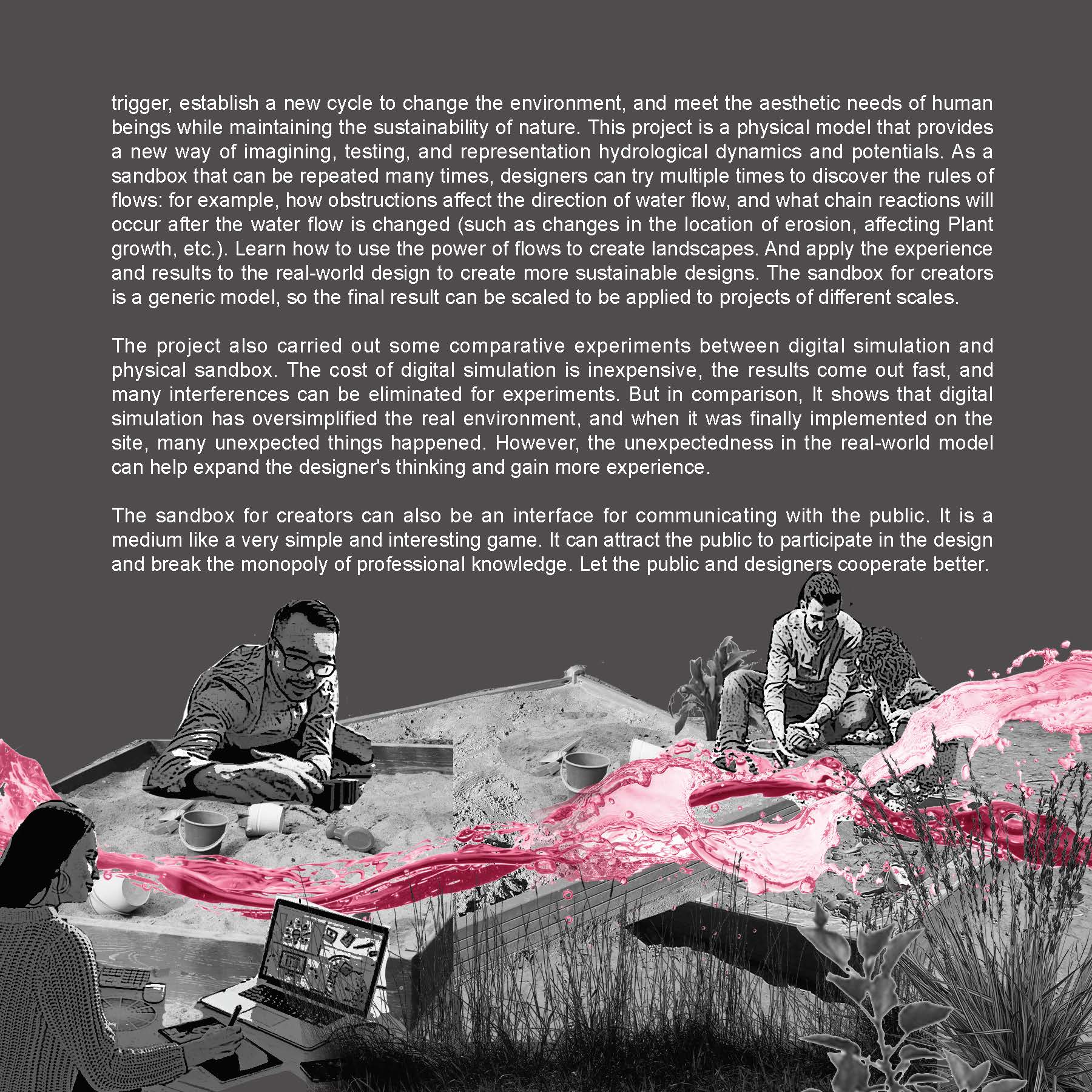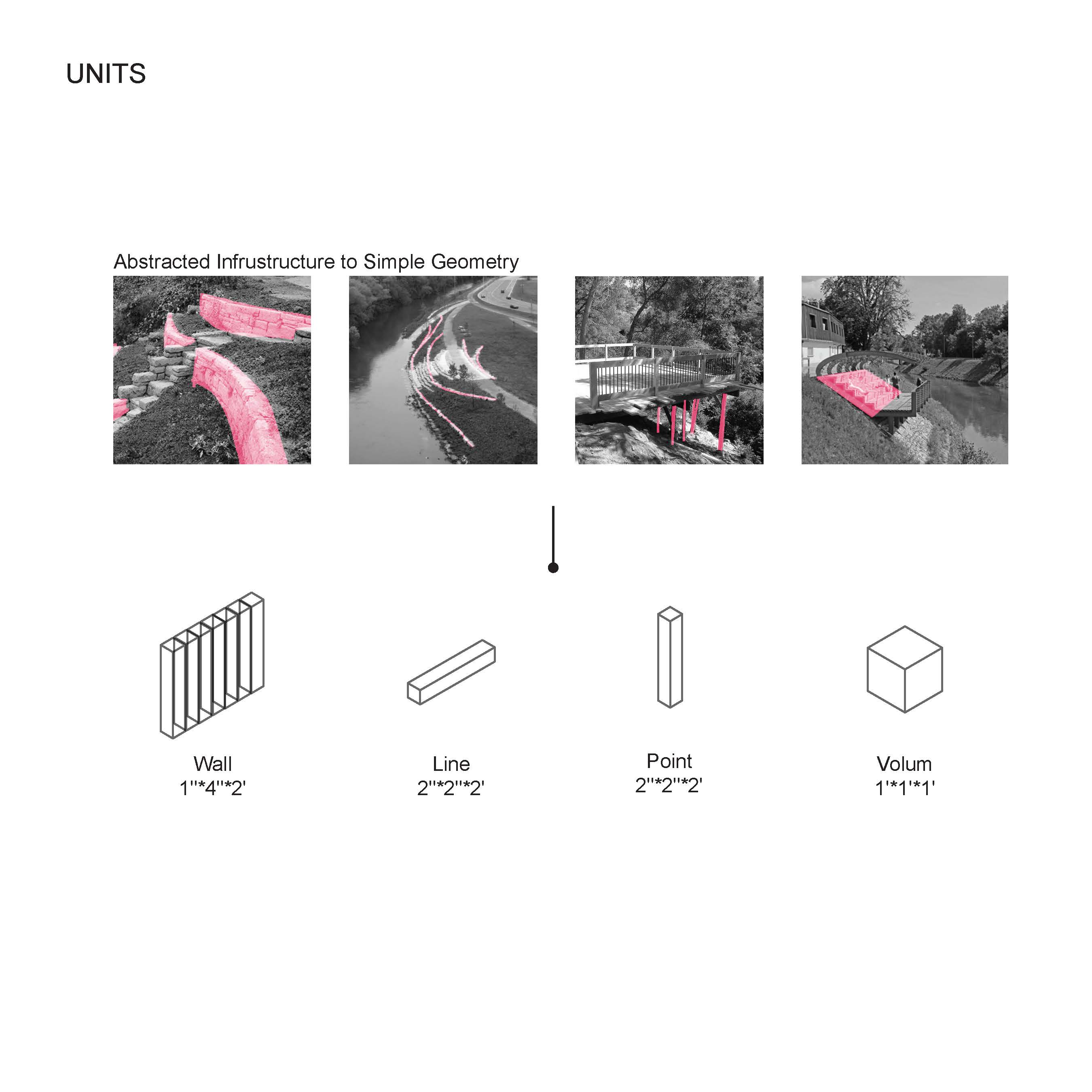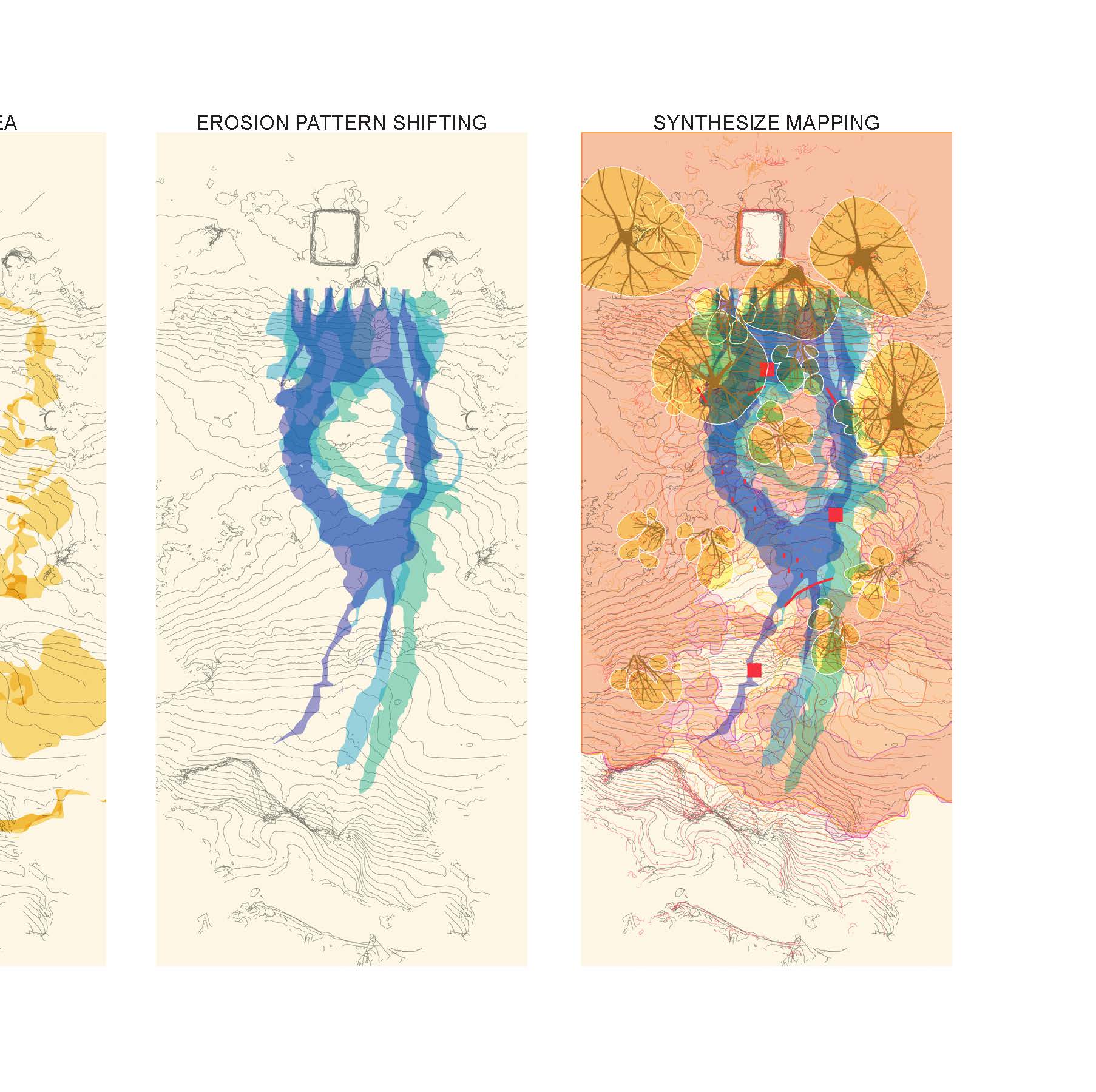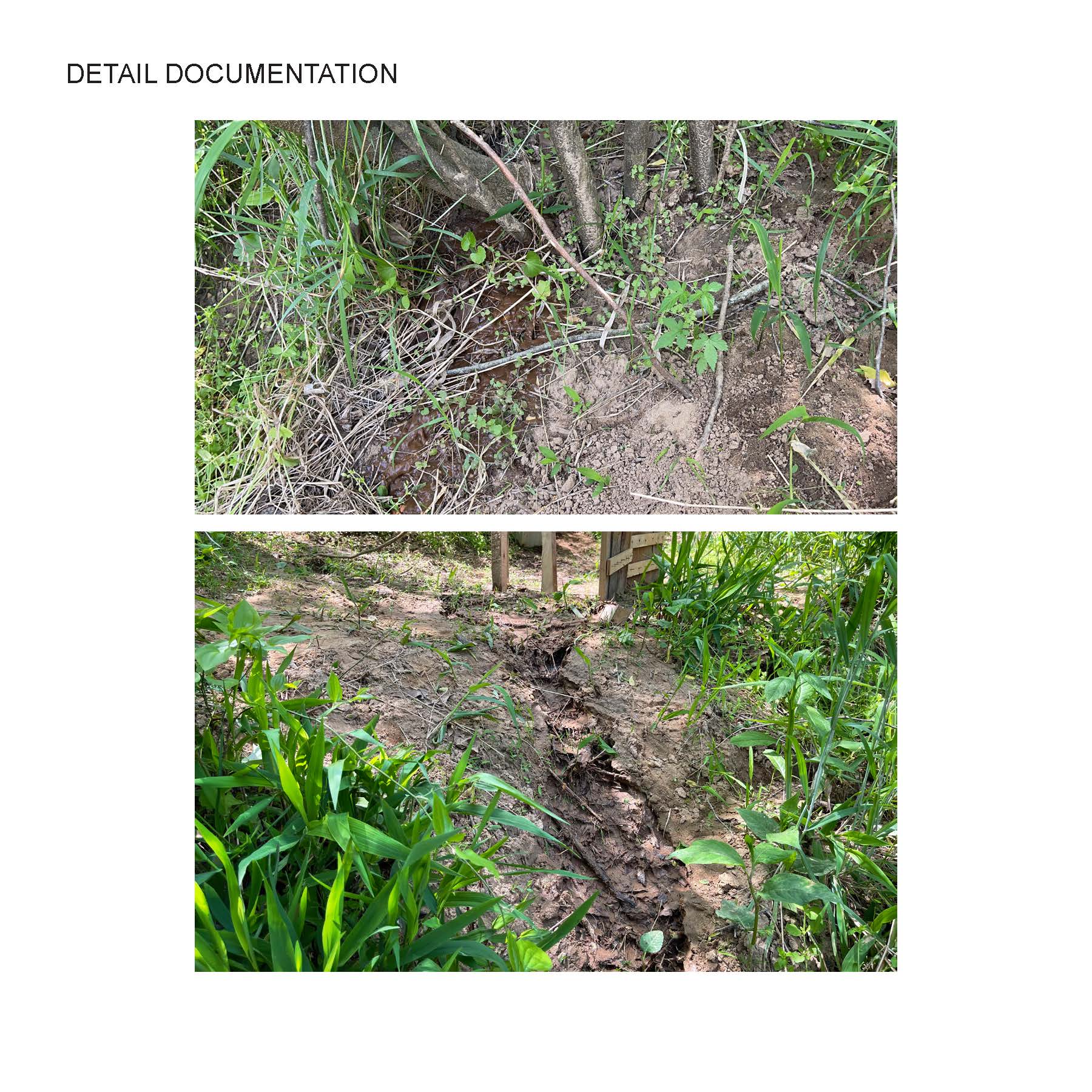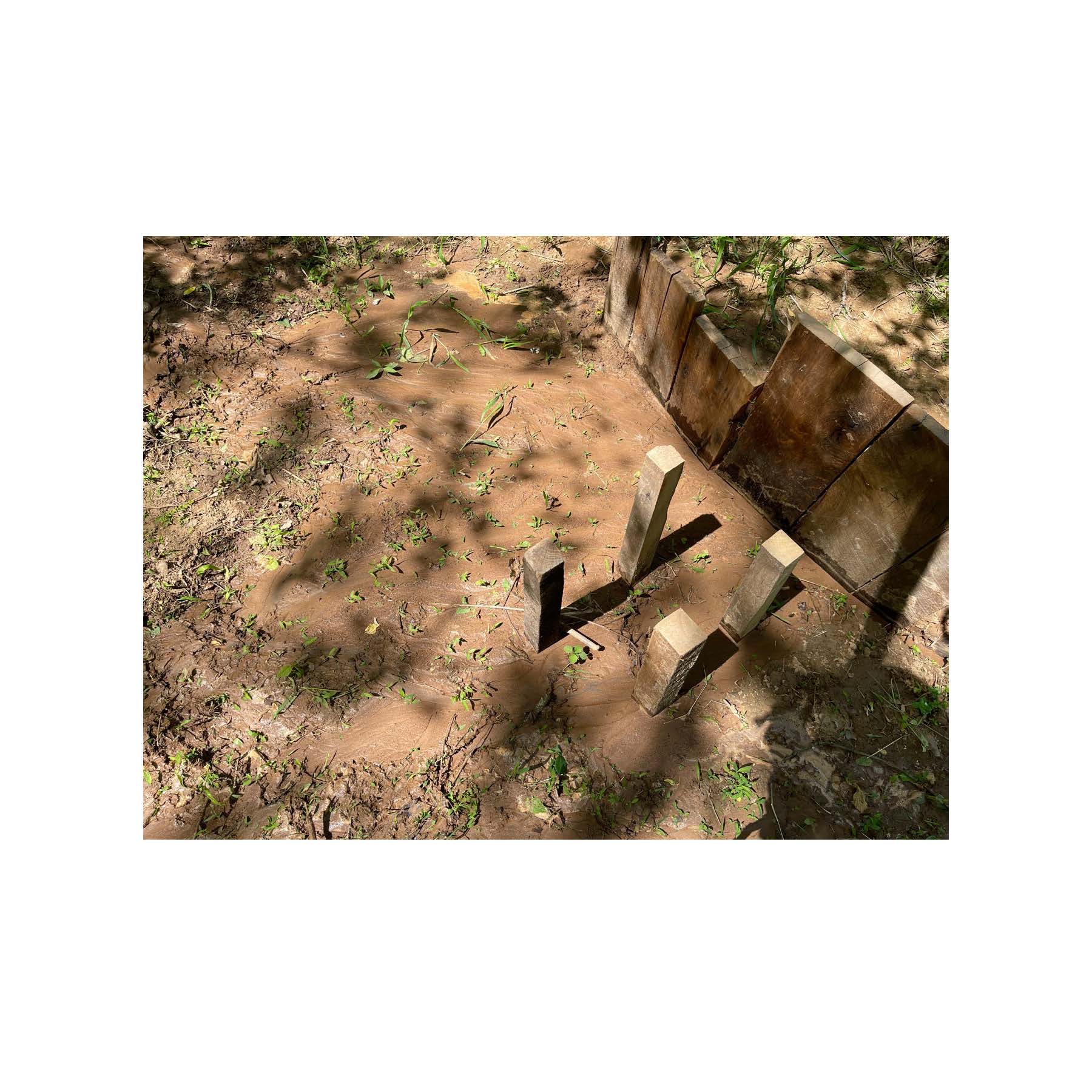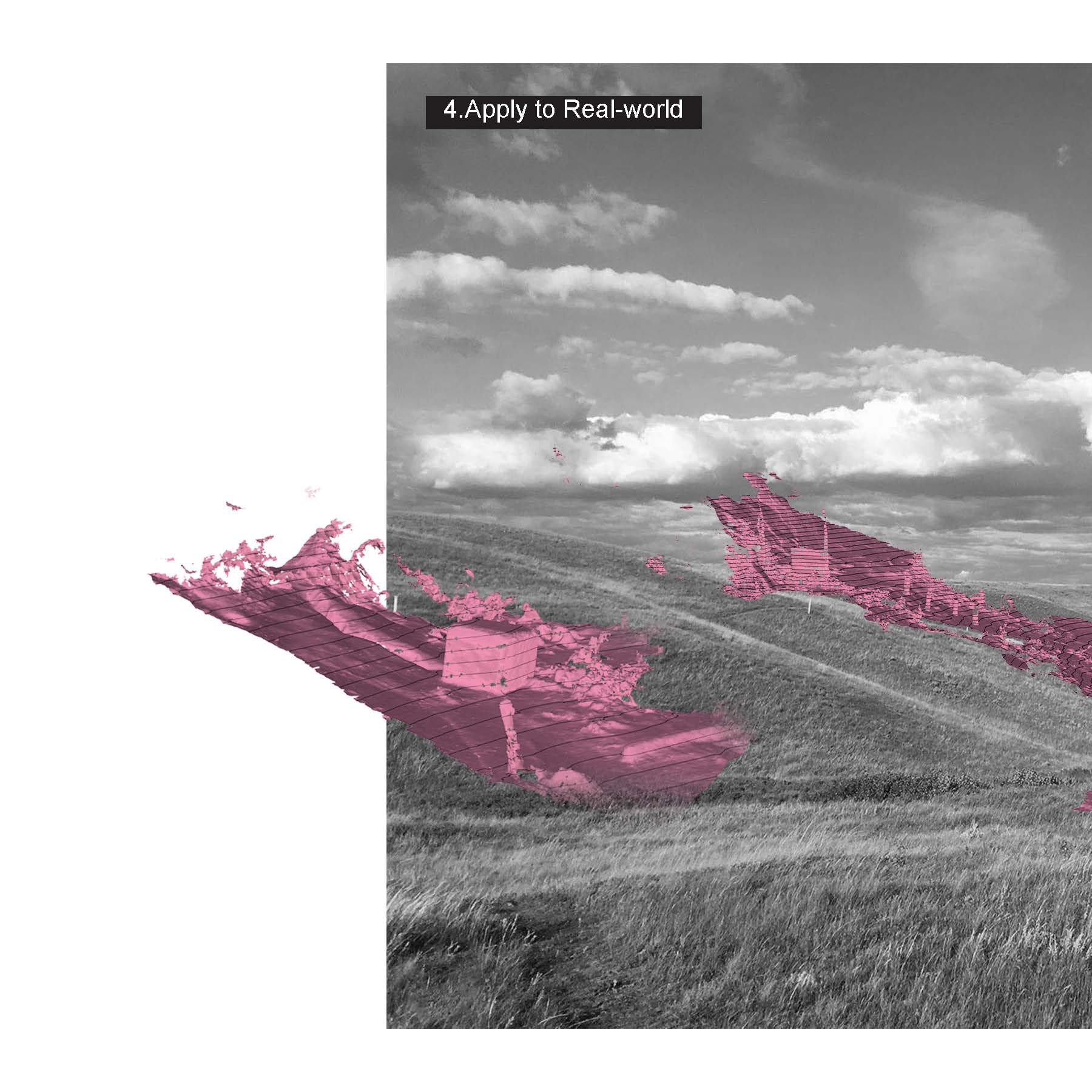Xinyu Wang
SANDBOX FOR CREATORS
Real-world Modeling: Cultivating Play and Rigor in Hydrological Representation and Design
Thesis: This project is a sandbox game for designers, allowing designers to use a generated, iterative, and experimental new method of design to help cultivate creativity. At the same time, the sandbox can help users understand the rules hidden under the complex natural environment and learn how various flows interacted in natural phenomena (such as erosion and plant growth). Finally, the results and experience are fed back to the real-world design.Positioning: With significant global environmental problems, such as global warming and extreme weather, many people regard human beings and nature as a dualistic relationship. However, human beings themselves are part of the natural system. The problem is they only focus on fixing superficial problems under the limitation of limited knowledge, and they eventually destroy the cycle of flows in nature and cause many issues. We should combine scientific experimental methods and traditional knowledge to treat natural issues from a more holistic perspective. Confronting the forces of nature will inevitably lead to the natural cycle collapse. What we really want to do is to cooperate with nature to create a more sustainable design that balances human and ecological benefits.In order to cooperate with nature successfully, the first thing we have to do is to learn how the various flows are hidden under the surface of natural phenomena. And try to switch the critical trigger, establish a new cycle to change the environment, and meet the aesthetic needs of human beings while maintaining the sustainability of nature. This project is a physical model that provides a new way of imagining, testing, and representation hydrological dynamics and potentials. As a sandbox that can be repeated many times, designers can try multiple times to discover the rules of flows: for example, how obstructions affect the direction of water flow, and what chain reactions will occur after the water flow is changed (such as changes in the location of erosion, affecting Plant growth, etc.). Learn how to use the power of flows to create landscapes. And apply the experience and results to the real-world design to create more sustainable designs. The sandbox for creators is a generic model, so the final result can be scaled to be applied to projects of different scales.The project also carried out some comparative experiments between digital simulation and physical sandbox. The cost of digital simulation is inexpensive, the results come out fast, and many interferences can be eliminated for experiments. But in comparison, It shows that digital simulation has oversimplified the real environment, and when it was finally implemented on the site, many unexpected things happened. However, the unexpectedness in the real-world model can help expand the designer’s thinking and gain more experience.The sandbox for creators can also be an interface for communicating with the public. It is a medium like a very simple and interesting game. It can attract the public to participate in the design and break the monopoly of professional knowledge. Let the public and designers cooperate better.

